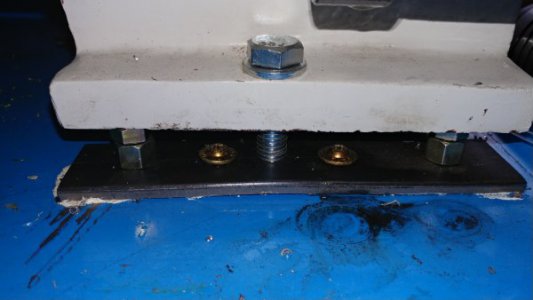First off, let me welcome you, along with all the others, to the board. And to the rat race, such as it is. I don't have a lot to add, just some insights that have accumulated over the years.
As a hobbyest, you have the
luxury of time. In that, if it ain't right, do it over. There are many here that do this for a living and must produce. If they don't turn out product, within specs, they don't eat. Many of the measuring tools they have are for saving time. A little here, a little there, it adds up over the course of a full day. What you
need is a set of calipers and a feeler guage. What ever else you
want is just that, want. A six inch dial caliper(or digital, though
I don't like them), a 0-1" micrometer(also called a
micrometer caliper) and a dial indicator and stand.
There are many ways to true a lathe. But some of them take 3 or 4 days while others take 3 or 4 hours and yet others take 10 minutes. Truing the lathe is a serious, albeit fairly easy, business. Roughing it in with a good mason's level and a plumb bob as shown in the video above will do for 95% of hobbyests. It's those other 5% that must have it accurate to three decimal places. And then the pros... I, however, am nowhere as good as they. But as a retiree in my own field, don't really care. I have enough skills to build what I want and anything more would be a waste.
Let me start off by saying that I was looking at something on eBay the other day and thought of the one I have had forever, or almost forever. One I stole off a ship in 1969. Didn't really steal it, it was being used and got thrown in with my stuff when I got transferred. At age 20, I wasn't as careful as later.
The point being that I didn't have a lathe of my own until nearly 30 years later. But, when it came up, I already had that item. I have traveled around the world a few times. Doing electrical and computer work. I gathered, as needed, the tools for each craft, as I needed, to accomplish a particular job. Some of those tools were of good precision, some only marginally so. But for machinist's work, might as well have been toys. And a few, specific to another craft, only buildable by a
Master Tool Maker. We get hung up on the "standards" of a profession, when all we need is enough for what we do.
I use as an example a framing carpenter, who considers a cut within 1/16" sufficient. I've worked with a few who considered 1/8" to be suitable. A cabinet maker, however, considers 1/64" to be a target to work toward. The machinist, on the other hand, must work every day to one thousandth. Or better... Look at the numbers involved here: 1/8=0.125, 1/16=0.062~, 1/64=0.015~, machinist 0.001 or 0.0001. If you needed a brass hammer turned from a chunk of (scrap) brass, would 2" +/-1/8" be close enough? Use what you need for the job at hand. If a 6" caliper (dial or digital) will yeild sufficient accuracy, why bother with a micrometer? Get what you need when you need it. Until then, dream but don't necessarily buy. For that brass hammer,
I would measure with a Mk.1 eyeball. To put it another way, TLAR, That Looks About Right. Use what you need, not what "everybody" is telling you.
Bill Hudson

